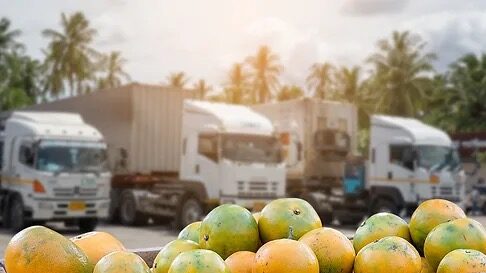Supply chain
Surviving and Thriving in a Volatile Market: The Crucial Role of Supply Chain Resilience

Recent evidence: Vegetable shortages in UK supermarkets in February 2023
Recent events in the UK show how multiple factors can simultaneously impact food security. Extreme weather events and climate change added to already existing societal challenges such as rising energy prices, labor force deficits, and political restructuring (Brexit), eventually leading to empty vegetable shelves in grocery stores across the UK. ¹
The domestic production of vegetables was not only hampered by rising inflation and the associated increase in fertilizer prices but also by above-average summer and winter temperatures and extended drought periods that challenged local farmers in the UK. Unluckily, extreme weather events further impacted the growing condition in major exporting countries that the UK relies on for vegetable supplies. The majority of tomatoes sold in UK supermarkets originate from Morocco and Spain. The North African country had to deal with rather untypically cold weather in February, along with heavy rainfall and flooding. ¹ At the same time, Spain suffered from below-freezing temperatures, which reduced the export of tomatoes, but also cucumbers, and peppers by roughly 20%. ²
In this challenging environment, better insights into seasonal forecasts and the monitoring of extreme weather events along the entire supply chain can become a key competitive advantage and driver for supply-chain resilience. According to experts, the UK food supply chains are too complex, which is why the balance can be quickly disturbed. ³ However, the UK is not an exception, many other business sectors will face similar challenges in the future.
The era to address supply chain risk
Reducing costs was most organizations' top priority over the past decade. The cheapest supplier often seemed like an obvious choice for saving money on components and materials. As a result, significant risk drivers in geographically dispersed supply chains were often neglected. Both the pandemic and political conflicts showed in recent years how vulnerable global supply chains can be. ⁴ Explicitly, the war in Russia and Ukraine affects directly commodity exports such as sunflower oil, steel, and wheat. Around 615,000 businesses worldwide depend on Russian and Ukrainian suppliers. ⁵
Ready to act?
Follow the best practice advice for resilient supply chains by Dun & Bradstreet⁵ and find out how Correntics Solutions can support you at each step.
- Risk-based assessment: Identify supply chain productivity impacts
- End-to-end map of supply chains including all supplier levels
- Continuous monitoring of supply chain: Minimize exposure to fast-changing effects such as extreme weather events, but also adapt to slower changing systems such as climate change or regulatory affairs.
- Establish alternative suppliers in case of failure of existing suppliers
- Invest in data and analytics: Manage supply chain risks and enable transparency